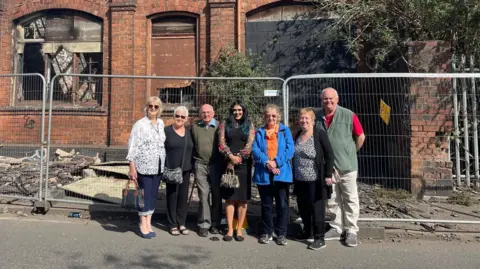Dig hoped to find remains of historical estate
 LDRS
LDRSA community group has welcomed plans to carry out an archaeological dig, which could uncover the remains of an estate belonging to a family who arrived in the town more than 900 years ago.
The Willenhall History Society (WHS) believes remains of the former Leveson estate and the surrounding moat lie just beneath the surface of Moat Street.
The Leveson family is one of the oldest families in Willenhall, arriving as part of William the Conqueror's army in 1066.
"Most people just assume that Willenhall started during the industrial revolution with locks. We want them to know we are much older than that," WHS member Jacqueline Read said.
"I think it's important for people to know where we started and be proud of where we started."
While the Leveson home had gone by the turn of the 19th Century, the grounds and surrounding moat remained until the area was redeveloped in the late 1800s.
No known records
Moat Street is now one of several roads covered by a regeneration project called the Willenhall Masterplan, which aims to build 107 homes.
Walsall Council granted provisional planning permission last year to demolish the remaining buildings across the site, most of which are derelict, but one of its conditions was that an archaeological investigation was carried out.
WHS has welcomed the condition but said they were "holding their breath" until the dig actually took place.
A council spokesperson said the local authority would work with Keepmoat, the site's developer, to ensure that the condition was met.
WHS said there were currently no known images or architectural records of the estate, although it was documented as having 10 hearths in the 1666 Hearth Tax return, making it the largest residential building in Willenhall at the time.
"There's a possibility that the old foundations of Leveson manor are still here under the ground," said Ralph Jackson, vice chair of WHS.
This news was gathered by the Local Democracy Reporting Service which covers councils and other public service organisations.
Follow BBC Wolverhampton & Black Country on BBC Sounds, Facebook, X and Instagram.
